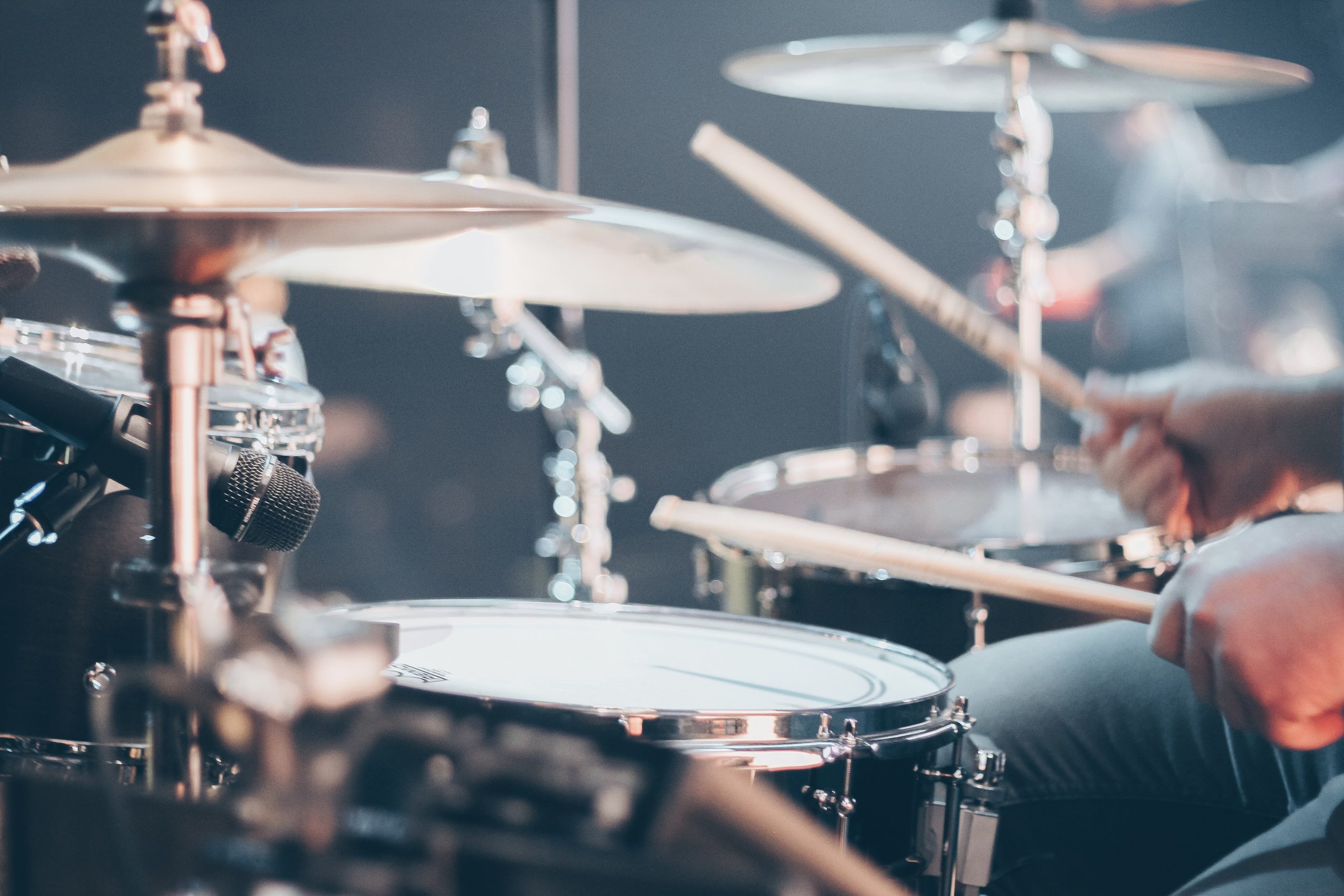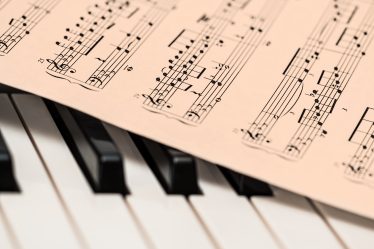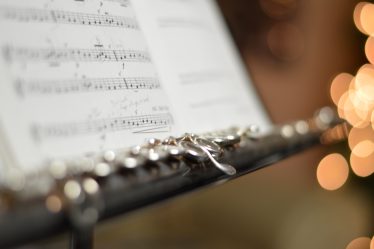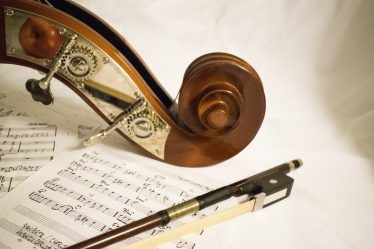
Drums are one of the most popular musical instruments in the world. Playing them attracts all ages, from young children to adults. Have you always wanted to play the drums or are you just looking for a musical instrument to fill your time? We’ve put together practical tips and advice to help any beginner.
Types of percussion instruments
To learn how to play the drums, you need to choose the right kit to practice all your new knowledge and tricks. Drum kits are generally divided into three main categories, namely:
- acoustic drum kits,
- electronic drum kits,
- percussion.
Acoustic drum kits
Acoustic drum kits are also referred to as classical. They are characterized by being versatile and can be used to play jazz, rock, and pop. The first classical drum kits began to appear in the late 18th and early 19th centuries. However, in this period, they were not played by just one person, but by several people at once.
The first experiments with foot pedals appeared in the 1840s. However, this was only an idea that did not start to be put into practice until some 75 years later. The next change in this musical instrument occurred in the 1860s when individual drums began to be coupled into kits.
Theatres with limited budgets have contributed to the creation of drum kits played by only one person. These could only afford a certain number of musicians, which was the reason why one person began to operate multiple drums.
Drumsets have evolved over the years, thanks to which you can find a large number of different versions suitable for playing jazz, pop, and rock on the market today.Composition of acoustic drum kits
Acoustic drum kits consist of multiple parts, which include:
- Bass drum – also referred to as a kick drum. It is a large drum that stands on the ground and can also be played with a foot pedal. It has a deep sound and is usually the deepest-tuned drum in the entire kit.
- Snare drum – also known as a rhythm drum because it is the basis for setting the rhythm. It is not to be missed in the kit. You can place it in several places, the most common being under the drummer’s feet.
- Floor tom – you may also know it as a boiler. It is placed on the floor, usually to the right of the drummer. It is used to play transitions (breaks).
- Cymbal Kit – Cymbals are another important part of drum kits. You can choose from a variety of designs, with the basic ones including:
- Hi-hat cymbals – this is one of the most commonly used types of cymbals you will find on the market. They are characterized by the fact that they consist of two horizontally positioned cymbals and one upper cymbal, which you can control with a foot pedal. This allows you to vary the resonance of the cymbals and the overall sound. The resulting sound produced by the Hi-hat cymbals is penetrating and serves to set the tempo of the song.
- Crash cymbals – another popular type of cymbals are Crash cymbals. They are versatile pieces that can be played with almost anything. However, they are especially popular with musicians in symphony orchestras. The sound of Crash cymbals is characterized by being strong, distinctive, and crisp.
- Ride cymbals – these are cymbals that are usually included in classic drum kits. Their main task is to maintain the tempo. Ride cymbals are characterized by having a nice ringing sound with a longer duration of the tone (longer sustain).
- Additional cymbals – once you choose one of the basic and main cymbal types, you can add more types to your drum kit. These include, for example, Splash or Bell cymbals. China types are also popular, which are characterized by a crisp and distinctive sound. The combinations you can create with cymbals are numerous. What is important, however, is that they fit you and that you can play your chosen style of music with them.
You will find the individual components of acoustic drum kits in a variety of sizes and materials. These factors affect how a musical instrument will sound and how much it will cost. As a beginner, you should choose a cheaper design that may not provide as good a sound, but will be enough to get you started. Then, as you get better and know that you enjoy playing the drums, you can gradually invest in more expensive pieces.
In addition to quality and price, you should also think about what a classic drum kit must not lack. A set containing snare, bass drum, and hi-hat cymbal is generally considered essential. Additional cymbals or gear is optional.
Benefits of acoustic drum kits
Acoustic drum kits have multiple benefits, which include:
- These kits are great for playing most acoustic styles of music, such as rock, pop, jazz, blues, and funk.
- Acoustic sets are ideal for playing energetic and loud music.
- This type of kit can respond brilliantly to touch.
- While playing, you will learn a lot of skills that you can use later when you learn to play, for example, an electronic set.
Disadvantages of acoustic drum kits
Acoustic drum kits also have a few limitations and minuses. These include:
- Learning can be complicated, especially if you live in an apartment, because drums have a distinct and sharp sound that can annoy neighbors.
- The acoustic set doesn’t take up much space.
- Acoustic set requires more demanding tuning.
- A quality acoustic kit that you will want to buy later when you have more experience is reasonably expensive.
Electronic drum kits
A second type of drum kit is the electronic drum kit. At first glance, they are very similar to acoustic ones. The base consists of a bass drum, toms, and cymbals. However, there is one big difference – instead of drums, you play on so-called pads.
Pads are devices that are generally made of plastic. They have a sensor that senses the strike of the mallet. It then sends this information to a sound module producing digital sound.
Another difference of electronic drum kits is that they can be plugged into a stereo or hi-fi device. In addition, you can plug headphones into them so you don’t disturb anyone when you play.Expert advice
The advantage of electronic drum kits is that you can play some music into them via an external player. This makes playing much more fun and in many cases easier.
Benefits of electronic drum kits
Some of the benefits of electronic drum kits have already been mentioned. other advantages include:
- You can set up the drum kits yourself, so you can get exactly the sound you want or need. Setting up the drums is not too difficult. You can master it after just a short time of learning.
- The pads are generally smaller than traditional acoustic drums. Indoors, they don’t take up too much space.
- Playing on electronic drum kits is much easier than on acoustic drum kits. They are therefore suitable for beginners.
Disadvantages of electronic drum kits
Electronic drum kits have also their disadvantages. They are:
- The cheaper electronic drum kits are generally limited for beginners, which is why you don’t have to control a lot of processes when playing.
- The higher quality kits, which are suitable for the advanced drummer, represent a great investment.
Percussion
Percussion instruments, often referred to as percussion instruments, are not classical percussion instruments, but are part of the percussion category. They represent a variety of different melodic musical instruments, such as ethno drums, bongos, or congas. Tambourines, triangles, vibraphones, xylophones, and castanets can also be included in the percussion category.
Percussion instruments are suitable for adults and children. They have a long history and can be used in almost every musical style. Learning to play them is relatively easy and quick.
Types of percussion
There are a great number of percussion instruments. Among the most popular are:
- Djembe drums – these are the most popular percussion drums. At first glance, their shape resembles a chalice. They have a long history. They originated in Africa and are made from a single piece of wood. Hard and durable woods are usually used, but nowadays you can also find designs made of composite materials. The djembe can produce a large variety of sounds, making it a versatile musical instrument. In addition, it is characterized by the fact that it is very loud, which makes it easy to hear when playing.
- Drum conga – congas also originated in Africa. However, their greatest and most notable evolution occurred in Latin America. Most drummers generally play two congas together, which can produce very interesting tones. Conga drums are characterized by their narrower shape and the fact that they can be struck not only with the hand but also with mallets. Congas are divided into three basic groups, namely the Quinto (the highest drum), the tres dos or tres golpes (the middle drum), and the tumba or salidor (the lowest drum).
- Bonga drums – Bonga drums also originated in Latin America. They are usually found on the market in the form of two connected drums, which are played with sticks and hands. Bongas, along with congo drums, is an integral part of the percussion instruments used in Latin music genres such as salsa. In addition, they can also be used to play rock or jazz.
- Bubny darbuka – these are percussion musical instruments of Arabic origin with a sharp and ringing sound. They are characterized by a shape resembling a cup. They are usually made of aluminum body and synthetic mud.
- Cajon – this is a smaller box, inside of which there are tunable strings that make a sound when you drum on top of it with your hands. The sound of this Latin-American percussion instrument depends on several factors. In addition to the tuning of the strings inside, the force of the strike has a great influence on the resulting sound. The cajon is a very versatile musical instrument that is suitable for beginners and advanced players alike.
- Boomwhackers – The category of percussion musical instruments includes trumpets called boomwhackers. They are great for children and beginners who are learning to perceive rhythm and melody. The whole process of learning and playing is facilitated by the different colors of the trumpets.
Interesting
In Africa, the djembe drum is usually played by men. As well as on the dunun drum, which accompanies the djembe drum in most cases. Other percussion instruments, such as the shekere, karignan, or kese kese, are mainly played by women.
What to look for when choosing a drum kit?
The choice of percussion instruments is not difficult. However, it is important to know what to look for. Aside from the type of percussion kit itself, it’s important to know other factors as well. What are they?
Type of wood
The way drums play is greatly influenced by the material they are made of. High-quality and durable wood is most often used to ensure the best results. The most popular types of wood include:
- Maple wood – acoustic drum models that are made of maple wood are considered to be the best and highest quality on the market. This type of wood is harvested in Canada and is inspected several times by experts before it is used. Some of the brands that have quality maple drums in their portfolio include DW Drums. So if you decide to buy maple drums, expect to pay a high sum in the range of several hundred to thousands of euros.
- Birch wood – another quality wood that provides sound with excellent resonance. Birch drum bodies are usually made of up to six layers. Compared to maple wood, birch wood is slightly cheaper, but its products still belong to the expensive category.
- Combination of several types of wood – in addition to single-wood percussion, you can also encounter those that are made from a combination of several blocks of wood. In particular, many manufacturers combine walnut with other woods to provide a full and rich sound. For example, a combination of walnut and birch sounds great. Another versatile wood suitable for combining is poplar. It gets along best with mersawa, which produces a deep sound.
Brand
There are several brands available on the market that guarantee quality. These include Mapex, DDRUM, Stagg, DW, Yamaha, or Tama.
But remember that you shouldn’t just look at the brand when buying drums. Just because a brand is of high quality doesn’t necessarily mean that its products will suit you. Therefore, before you buy, compare the different models of drums and make sure they have the features you require.
Price
Before buying drums, set a orientation budget. This will allow you to filter your offer with only the drums you are willing to invest in. This will avoid a lengthy browse through hundreds to thousands of products, which will include designs that are too expensive.
Generally, beginners who want to play drums only in their free time should reach for cheaper kits priced between 300 and 600 euros. Advanced musicians who are serious about playing can also get drums costing over a thousand euros.
You should also get quality accessories for your percussion instruments. You should not miss:
- Hardware – Hardware includes all the stands, mounts, and pedals you can’t do without when playing. Always match your choice to the instruments and accessories you have at home. You won’t only need hardware if you get a complete drum kit that should have it.
- Tuning accessories – Tuning on your own without some help is complicated not only for the beginner but also for many advanced musicians. Therefore, you will do well to get special drum tuners and a tuning key along with your drums.
- Training aids – if you want to get better results from your training, you must not forget about training aids such as digital metronomes or special training pads. There are more than enough options. You will surely find something to suit you.
- Protective covers and mats – You will need protective covers to extend the life of your musical instruments. These are sold in both soft and hard versions in the market. The choice is up to you. A carpet is also a great help, as it ensures that the kit will not shift while playing.
- Headphones and earplugs – when playing regularly, your hearing will be subjected to a lot of strain in the form of loud sounds. Therefore, earplugs should not be missing from your music gear. Along with them, you can also buy high-quality headphones, which you will appreciate especially when playing electronic drums.
- Electronic Drum Sound Accessories – If you’ve decided to play electronic drums, you’ll need something to sound them. A great solution is an electronic drum kit combo, active speaker, or headphones.
- Spare Blankets – some blankets may break during gameplay. Therefore, you should have several designs in stock for your drums.
How to learn to play the drums?
Drums are one of the most popular musical instruments today. If you have decided to learn to play them, you can choose whether to learn at home or leave it to a professional.
Learn to play at home
Just like any other musical instrument, you can learn to play drums at home. The whole process will be a bit longer than if you choose a tutor, but it’s not impossible. The important thing is that you devote enough time to percussion, ideally at least an hour a day.
There are many ways of learning. You can choose different videos with tutorials for beginners, books, or articles. We bring you some basic steps you should not miss when playing drums.Correct seatingTo start with, make sure you’re sitting well behind the drums. It means that you are not slouching unnecessarily and the seating is comfortable enough to stay in the same position for several hours.
You can get a special drum stool that won’t restrict your movement. If you don’t want to invest in one at first, build a comfortable stool or chair without armrests to go with the drums.
Using chopsticks and whisks
When playing percussion, drumsticks are generally used. However, in some cases, such as when playing jazz, you can replace them with broomsticks. These produce a very interesting rustling sound that is characteristic of jazz.
To ensure that your hands don’t hurt when you play and that you get exactly the sound you want, you need to hold both the sticks and the whisks correctly. The best way to do this is to grasp them in the first third of their length, making sure to hold them mainly with your thumb and forefinger.
Expert advice
The sticks can break or otherwise be damaged at any time during play. Therefore, you should always have several pieces in stock.
Syllable countingThe ideal technique to help you learn is syllable counting. The point of this technique is that each note has a word or several syllables that correspond to the value of that note. Count them and try to hit the rhythm.
When this exercise seems easy, start engaging your legs as well as your arms. Repeat the exercises until you are satisfied with the result.
Rhythm Perception
Listen to your favorite songs and feel their rhythm. Close your eyes for a moment and try to beat the rhythm with chopsticks, pencils, or just your hands on your thighs. Practice your knowledge whenever you listen to music, no matter where you are.
Basic rhythmic exercises
Translate all your theoretical properties into practice. Find videos of basic rhythmic exercises on the internet and get to work. Start with the easier exercises first, and later, when you get good at them, you can try the ones that are a bit more complicated.
Spend enough time on individual exercises. If you fail to do an exercise, repeat it until you can do it without major errors.
Exercise
To be really good at playing drums, you have to practice all the time. Spend a few hours a week on the drums and try to play more and more complicated songs.
Besides playing, however, don’t forget other skills, such as tuning. Try tuning your drums, or try different settings within the electronics.
Learn to play with a tutor
If you want to make sure you don’t make any unnecessary mistakes and don’t go round and round in circles, you would do well to hire a teacher or tutor. They will explain the basics and gradually teach you how to play more complicated songs.
You can find a lot of tutors with professional experience on the internet nowadays. All you have to do is look up the phrase play lessons or music teacher along with the city you would like to have lessons in. For example, drum lessons in London, drum teacher in Manchester or drum lessons in Birmingham.
You can also find lecturers for other musical instruments and from other cities, such as a violin tutor in London or a guitar tutor in Liverpool.
Learning the drums with a tutor has many advantages. In addition to having professional supervision, you can progress your learning much faster. As a result, you will avoid the annoying frustration you might feel if you don’t do well when learning on your own.
Many tutors nowadays provide in addition to classical lessons also online lessons. You don’t have to go anywhere to learn how to play the drums. You will save a lot of time, which you can invest, for example, in further playing.
Try playing the drums yourself
Drumming attracts young and old alike. But no wonder. Playing is not too difficult and you can learn from the comfort of your own home. However, instead of slowing down and spinning in circles, it’s a good idea to consider using the services of professional tutors. They can tell you where you’re going wrong, teach you the basics, and help you with playing more complicated songs as well.


